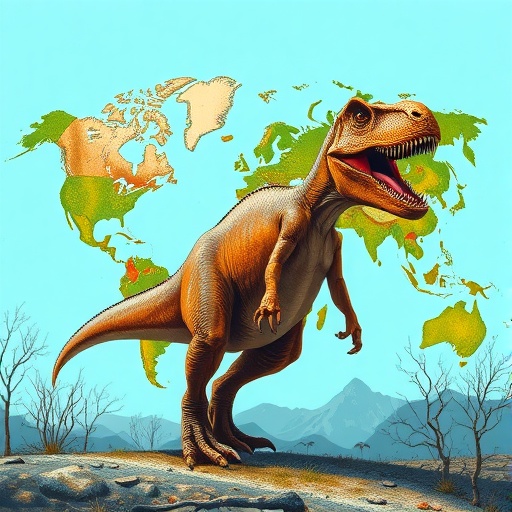In a groundbreaking study that promises to reshape our understanding of the Cretaceous-Paleogene boundary, researchers have uncovered a compelling connection between the mass extinction of dinosaurs and significant continental facies shifts. This study not only offers new insights into the events surrounding the extinction of these magnificent creatures but also highlights the profound impact they had on global ecosystems. The findings challenge existing narratives, suggesting a more complex interplay between extinction events and geological changes.
As we delve into the intricate details of this research, it is essential to understand what the Cretaceous-Paleogene boundary represents. Approximately 66 million years ago, this geological boundary marked a profound transition in Earth’s history, characterized by the abrupt disappearance of a vast majority of species, including the non-avian dinosaurs. This rich tapestry of life was suddenly altered, giving rise to new ecological dynamics. The research led by Weaver and colleagues identifies how this extinction event can elucidate changes in continental facies, or sedimentary environments, which are now being closely examined through the lens of modern geology.
The significance of understanding facies shifts cannot be understated. Facies are essentially the distinct characteristics of a rock unit that reflect specific environments of deposition, ranging from deep marine settings to deltaic or fluvial systems. These shifts are crucial for reconstructing past environments and understanding the climatic and tectonic events that may have influenced them. The study posits that the extinction of dinosaurs fundamentally altered the biota in these environments, striking a delicate balance that dictated sedimentation patterns and ecological trajectories for millions of years to come.
Traditional views have often relegated the role of dinosaurs in these sedimentary processes to the background. However, the new findings suggest that the loss of these terrestrial giants drastically modified the landscape and, in turn, the facies that developed during the immediate aftermath of their extinction. This relationship between biological extinction and geological transformation opens up a new dialogue within earth sciences, urging geologists to consider biological factors more prominently in their models and theories.
The authors deployed an interdisciplinary approach, utilizing paleontological data alongside sedimentological analysis to bridge the gap between life and geology. Their comprehensive research methodology involved examining stratigraphic records across various locations globally affected by the mass extinction event. By correlating these records with the fossil evidence of dinosaurs and other terrestrial fauna, the researchers were able to illustrate a timeline of ecological shifts that coincided with notable geological changes.
One of the remarkable aspects of this study is its emphasis on the temporal aspects associated with extinction and facies changes. While it is widely accepted that the asteroid impact is a significant factor in the global extinction event, the authors suggest that the immediate aftermath also plays a critical role in the redevelopment of ecosystems. Over time, the decimation of biodiversity led to alterations in sediment dynamics, influencing not only the local environments but also the global geological record.
Moreover, this research challenges certain assumptions regarding resilience and recovery in ancient ecosystems. While scientists have often perceived the recovery following mass extinctions as a linear process, this new perspective argues for a more multifaceted approach. The interplay between the loss of dominant species like dinosaurs and the emergence of new faunal groups generated a complex, non-linear recovery trajectory marked by varying degrees of environmental and biological stress.
In addition to providing a fresh take on ancient environments, the findings of this research have profound implications for contemporary issues surrounding biodiversity loss. By examining the past through the lens of extinction events, we might glean insights into how current species declines and habitat degradation could shape future sedimentary environments. The echoes of history could serve as a cautionary tale for today’s biodiversity crisis, reiterating the importance of understanding the intricate link between species health and global geological processes.
The study also delves into the intricate ways in which geomorphology and sediment transport can be influenced by biological factors. As species went extinct, the composition of vegetation and microbial life underwent fundamental shifts, leading to new sediment erosion and deposition patterns. The dynamic interplay between life and geology thus becomes a central theme, further supporting the hypothesis that




